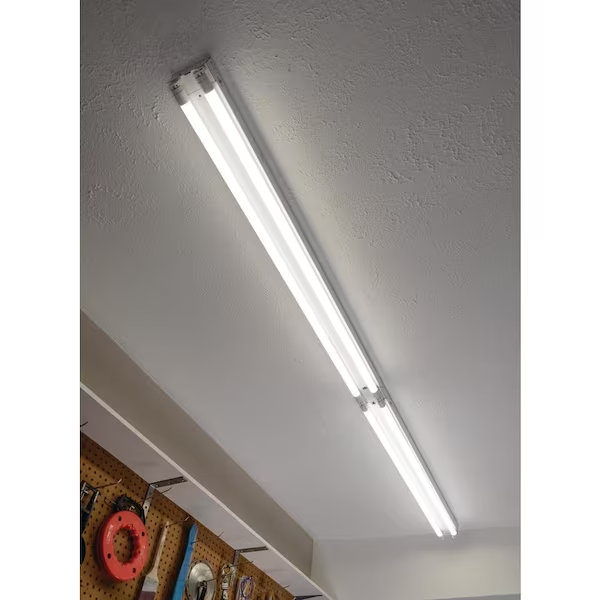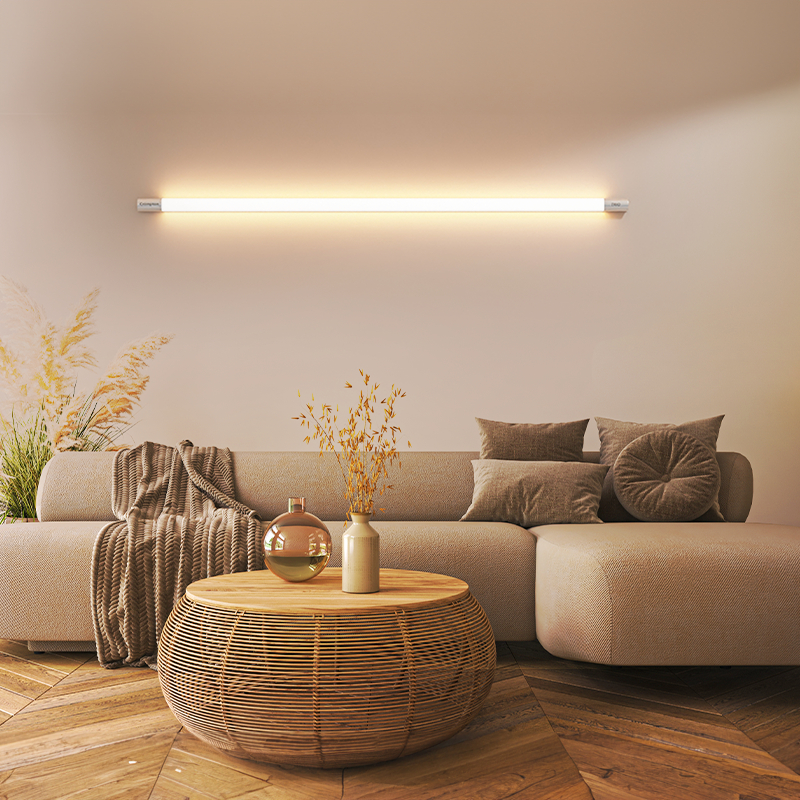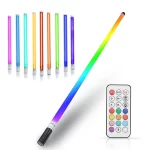Tube light, also known as fluorescent tube lights, have been a staple in residential, commercial, and industrial lighting for decades. Their efficiency, long lifespan, and excellent light output make them a popular choice for various applications. This comprehensive guide covers the history of tube light, their types and functions, advantages, installation and maintenance tips, energy efficiency, and modern advancements.
Contents
History and Evolution of Tube Lights
Early Beginnings
The concept of tube lights dates back to the early 20th century, with the development of neon lights and other gas-discharge lamps. These early versions used gases like neon or argon to produce light when an electric current passed through them. By the 1930s, scientists had developed the first practical fluorescent lamps, which used a phosphorescent coating to improve light quality and efficiency. These early fluorescent tubes offered a brighter, more energy-efficient alternative to incandescent bulbs, paving the way for widespread adoption in the decades that followed.
Advancements Over Time
Since their inception, tube lights have undergone significant advancements in technology and design. The introduction of compact fluorescent lamps (CFLs) in the 1980s revolutionized the market by offering smaller, more versatile lighting solutions. The development of electronic ballasts in the 1990s improved energy efficiency and reduced flickering, enhancing the overall user experience. More recently, LED tube lights have emerged as the latest innovation, offering even greater energy savings, longer lifespans, and improved light quality. These advancements have cemented tube lights’ status as a reliable and efficient lighting option for various applications.

Types and Functions of Tube Lights
Fluorescent Tube Lights
Fluorescent tube lights are the traditional form of tube lighting and consist of a glass tube filled with a small amount of mercury vapor and an inert gas, such as argon. When an electric current passes through the tube, it excites the mercury vapor, producing ultraviolet (UV) light. This UV light then interacts with the phosphorescent coating on the inside of the tube, emitting visible light. Fluorescent tube lights are known for their energy efficiency and long lifespan, making them a popular choice for general lighting in homes, offices, and industrial settings.
LED Tube Lights
LED tube lights are a more recent innovation and use light-emitting diodes (LEDs) instead of fluorescent gas to produce light. These tubes offer several advantages over their fluorescent counterparts, including lower energy consumption, longer lifespans, and improved light quality. LED tube lights are available in a variety of color temperatures and brightness levels, making them suitable for a wide range of applications. Additionally, LED tubes are often compatible with existing fluorescent fixtures, allowing for easy retrofitting and upgrading of lighting systems.
Advantages of Tube Lights
Energy Efficiency
One of the primary advantages of tube lights is their energy efficiency. Both fluorescent and LED tube lights consume significantly less electricity than traditional incandescent bulbs, resulting in lower energy bills and reduced environmental impact. LED tube lights, in particular, are known for their exceptional efficiency, converting a higher percentage of electrical energy into visible light and generating less heat. This increased efficiency translates to significant energy savings over the long term, making tube lights an economically and environmentally beneficial choice.
Longevity and Durability
Tube lights are also renowned for their longevity and durability. Fluorescent tube lights typically last between 7,000 and 15,000 hours, while LED tube lights can last up to 50,000 hours or more. This extended lifespan reduces the frequency of replacements, lowering maintenance costs and minimizing disruptions. Additionally, tube lights are designed to withstand various environmental conditions, making them suitable for both indoor and outdoor use. Their robust construction and long lifespan contribute to their overall cost-effectiveness and reliability.
Installation and Maintenance Tips
Proper Installation
Proper installation is crucial to ensuring the optimal performance and longevity of tube lights. Before installation, it is important to choose the right type of tube light for the specific application and ensure compatibility with existing fixtures. For fluorescent tube lights, installing compatible ballasts is essential to prevent flickering and ensure efficient operation. LED tube lights may require rewiring or the removal of old ballasts, depending on the specific model. Following manufacturer guidelines and consulting with a professional electrician can help ensure a safe and successful installation.
Routine Maintenance
Regular maintenance is essential for keeping tube lights in optimal condition and prolonging their lifespan. For fluorescent tube lights, periodic cleaning of the tubes and fixtures helps maintain light output and efficiency. Replacing burned-out or flickering tubes promptly prevents potential damage to ballasts and other components. LED tube lights generally require less maintenance, but it is still important to periodically inspect and clean the fixtures to ensure optimal performance. Following these maintenance practices helps maximize the benefits of tube lights and ensures consistent, reliable illumination.

Energy Efficiency and Environmental Impact
Reducing Energy Consumption
Tube lights, particularly LED models, are highly energy-efficient and can significantly reduce overall energy consumption. By replacing incandescent bulbs or less efficient lighting options with tube lights, households, businesses, and industries can achieve substantial energy savings. This reduction in energy consumption translates to lower electricity bills and decreased demand on power grids, contributing to overall energy conservation efforts. Encouraging the widespread adoption of energy-efficient lighting solutions like tube lights is a crucial step toward sustainable energy management.
Lowering Environmental Footprint
The environmental benefits of tube lights extend beyond energy savings. Fluorescent and LED tube lights produce less heat than incandescent bulbs, reducing the demand for air conditioning and further decreasing energy consumption. Additionally, LED tube lights do not contain hazardous materials like mercury, which is present in fluorescent tubes. This makes LED tube lights a safer and more environmentally friendly option for disposal and recycling. By choosing energy-efficient and environmentally responsible lighting solutions, consumers can contribute to reducing their overall environmental footprint.

Modern Advancements in Tube Lights
Smart Lighting Technologies
Recent advancements in smart lighting technologies have further enhanced the capabilities of tube lights. Smart tube lights can be controlled remotely via smartphones or integrated with home automation systems, allowing users to adjust brightness, color temperature, and scheduling with ease. These features enable greater customization and energy management, providing added convenience and efficiency. Smart tube lights also often incorporate motion sensors and daylight harvesting, automatically adjusting illumination levels based on occupancy and natural light availability.
Improved Light Quality and Design
Modern tube lights have also benefited from improvements in light quality and design. Advances in LED technology have led to the development of tube lights with higher color rendering indexes (CRI), providing more accurate and vibrant color representation. This makes LED tube lights ideal for applications where color accuracy is critical, such as in retail displays, art galleries, and workspaces. Furthermore, sleek and innovative designs have expanded the aesthetic possibilities of tube lights, allowing them to seamlessly integrate into various architectural and interior design styles.
In conclusion, tube lights offer an efficient and versatile lighting solution for a wide range of applications. Understanding their history, types, and benefits can help consumers make informed decisions and maximize the advantages of these lighting options. Proper installation, routine maintenance, and awareness of energy efficiency and environmental impacts contribute to the long-term success and sustainability of tube lights. Modern advancements in smart technologies and improved light quality further enhance the appeal and functionality of tube lights, ensuring they remain a valuable component of contemporary lighting solutions.


